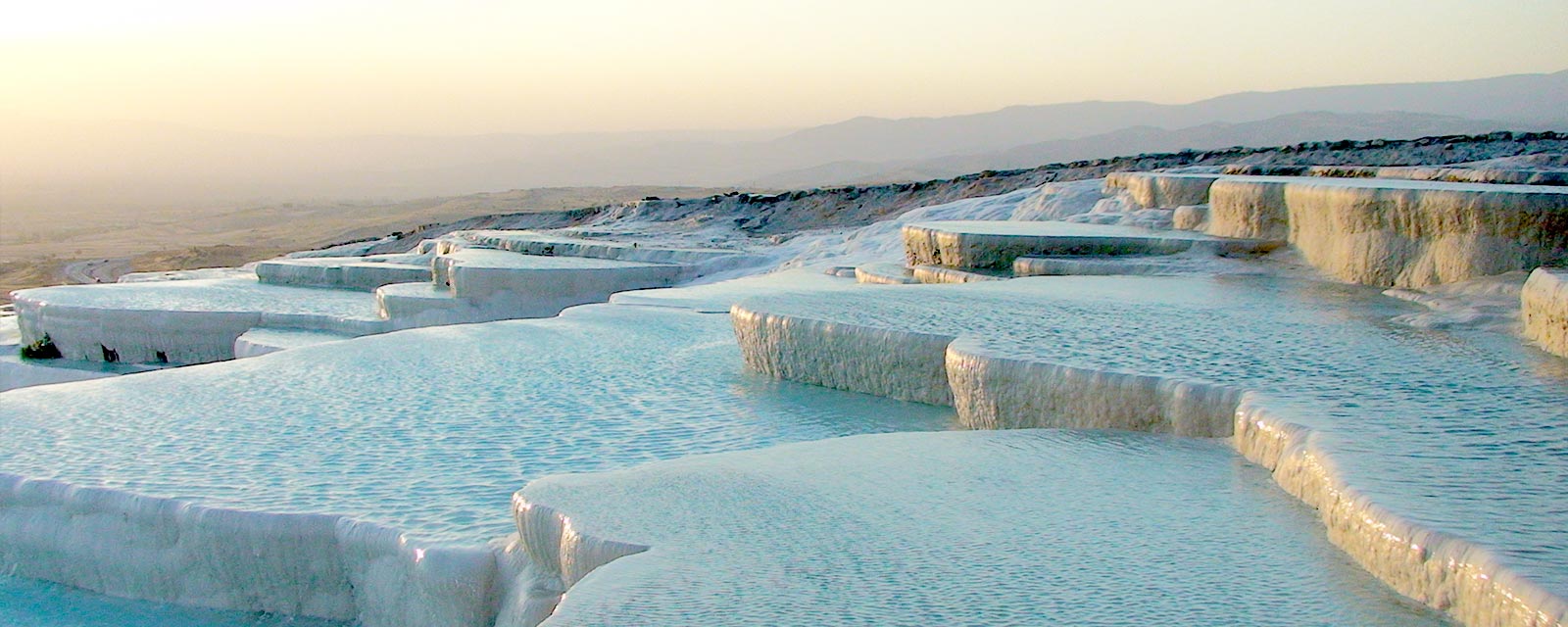Pamukkale Comes Like from Dreams

PAMUKKALE
Pamukkale is situated within the territory of Denizli province, and one of the most important destinations in Turkey. Situated on the South-western corner of the Anatolian Peninsula, Denizli provides passage between central Anatolia and the coastal areas of the Aegean and the Mediterranean regions. Pamukkale and the ancient city of Hierapolis are situated 20 kilometers from the city center. The healing springs of Pamukkale have cured and revitalized humanity for thousands of years. The thermal waters, truly a miracle of nature, not only embrace mankind with their restorative power, but over the millennia, have also created the unique travertine formations that resemble nothing so much as crystallized fields of cotton. Pamukkale and the adjacent ancient city of Hierapolis are listed as a site of World Heritage by UNESCO. Together they form one of the most attractive destinations in the World.
Seen from a distance the magnificent Travertine Terraces of Pamukkale look like the White clouds of heaven, or a sun-drenched, snow covered series of glittering ridges. As you approach you realize that the water is gently falling over the clouds of snow. Closer still, as you wade in ankle deep thermal water, you realize that this is unlike anything you have seen before and you are in for a once in a lifetime experience. Let us share the secrets of Pamukkale, which brings you in contact with the wondrous, magical architecture of nature.
Travertine is a sedimentary rock which is formed under specific conditions because of a chemical reaction. The terraces themselves are the product of this process. The geological events that have formed the thermal springs of Pamukkale have also affected a large region. There are 17 thermal springs in the region where the water temperature vary between 35 and 100 C. The thermal spring of Pamukkale is one of those springs which has been in use since antiquity, and has provided therapy to humanity through the millennia. The thermal waters of the spring follow a 320 m long channel to the head of the travertine ridge and fall into the travertine terraces, approximately 60-70 meters long, where the deposits form.
At the source, the temperature of thermal water is 35,6 C, and it contains a high concentration of calcium carbonate. When it comes in contact with the oxygen in the air it forms carbon dioxide and carbon monoxide gases, which evaporate and leave deposits of calcium carbonate. Initially, the calcium carbonate deposits are like soft jelly. Over the time it hardens and forms the travertine. However, if the visitors are allowed to walk in the cascading pools, that leads to squashing and dispersing the soft jelly of calcium carbonate. At present, thermal water is released over the travertine in a controlled program. If a large amount is allowed to flow on a certain area for a long time it leads to moss formation and darkening of the color of the travertine. The atmospheric conditions, temperature loss and duration of the flow affect the creation and maintenance of pure whiteness.
